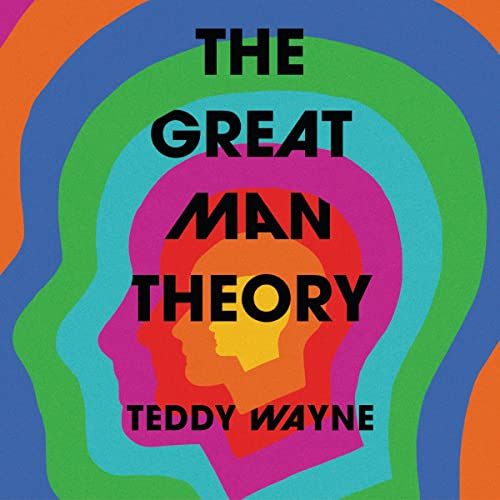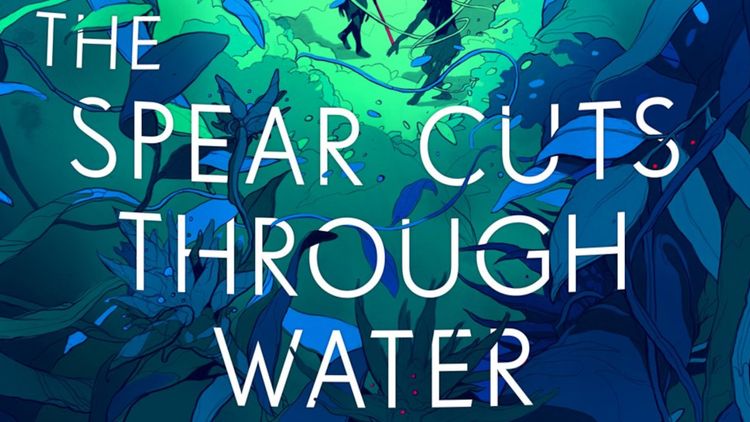The Mountain in the Sea by Ray Nayler

Human beings invented the Turing Test to determine if a machine has ascended into humanity's grace. But what happens when humanity encounters a species that may not see us as conscious? What happens when humanity fails another species’ Turing Test?
In his debut science-fiction novel “The Mountain in the Sea,” Ray Nayler explores this conundrum through three different type of entities. This triad of beings, in Nayler’s vision of a near-future, rotate around each other trying to understand, communicate, and exist side by side. There is the human with all its wanton greed, insatiable curiosity, and self-aggrandizing sense of worth. There is the android, attempting to understand their own consciousness and their own place in a world that shuns them. And then there is the third type of entity, which thrusts this novel into new science-fiction territory. It is not a cyborg nor is it an alien. Yes, it has multiple appendages, prehensile extensions of itself, the ability to regenerate its own limbs, and a single eye that stares out. But it does not come from the stars, nor is it prehistoric. It is the commonplace octopus, its meat bought and sold at grocery stories and sushi restaurants. And it is through the octopus that the novel examines this triangle of beings, this triumvirate of consciousness.
This question is explored across three different narratives each relating to the novel’s central themes about connectivity, networks, and memory. The primary story follows Dr. Ha, a biologist who published the groundbreaking text “How Oceans Think,” attracting the attention of mega-conglomerate, DIANIMA. Dr. Ha is transported by DIANIMA to a remote island in the region of what was formerly Vietnam to continue her research in privacy and seclusion. There she resides with the world’s first and only android, Evrim, a world-class invention that forced the United Nations to issue a blanket ban on the development of any technology relating to cyber-consciousness. Guarding her and Evrim is a veteran of the Chinese-Mongolian Winter War, Altantsetseg, a weathered wartime genius of drone combat. The novel’s second branch, or tentacle, follows Rustem, a Tatar hacker, hired by an anti-DIANIMA movement to break into a system no one else can even come close to penetrating. The novel’s third interweaving narrative follows Eiko, a programmer who aspired to work at DIANIMA before he became a slave of the seven seas, acting as manual labor aboard a fully automated ship. Each narrative possesses the same style of third-person narration, but content-wise vary greatly. Dr. Ha’s story is almost an ethnography of a newly discovered species, with treatises on linguistics and societal behavior. Rustem’s story is akin to a spy novel, fraught with imminent danger and subterfuge. Eiko’s is a tale of survival, as he attempts to hold onto his sanity the further he drifts from home. But what unites each winding story beyond their style is a focus on memory. Memories are made, but more importantly, memories are stored. But where do they go? What happens when a memory palace solidifies? What do you do with the sins you cannot forget?
These questions are sprinkled throughout the novel, linking the otherwise disconnected characters. Memory is attacked from different angles, with each protagonist having lived very different lives. Eiko clings to his memory raft, his only solace in his new life of indentured labor; Rustem is trapped in the present, only engaged by the task immediately before him; Dr. Ha seeks to throw her past overboard, eager to embark towards the future. Time is of the essence, as DIANIMA and their opposition careen towards each other across land, sea, and cyber-space.
To establish the rules and factoids of this world, Nayler begins each chapter with an epigraph, either an excerpt of “How Oceans Think” by Dr. Ha, or a quote from the memoir of Evrim’s inventor/parent. These selections elucidate many of the novel’s key themes, especially the headier concepts regarding language and memory. They pre-empt us for the concrete exploration of those abstract concepts, packaging complex topics into comprehensible chunks. Occasionally, they verge on repetition, like when a concept from an epigraph is repeated by a character in the following chapter, within mere pages of one another. This handholding is understandable considering some of the novel’s concepts are completely new to readers unfamiliar with mollusks and their mannerisms. But it is in these moments when Nayler directly reminds us of something we have just read, that the construction of the novel feels most apparent and our immersion in the deep sea is broken.
The history, geopolitics, and economy of “The Mountain in the Sea” is presented in much more subtle, almost obtuse, ways. This trail of breadcrumbs makes for a fascinating vision of the near future that leaves us wanting to know more with each revelation. The cause and conclusion of the aforementioned Chinese-Mongolian Winter War is never fully spelt out; we only get drips and drabs of its carnage from the mostly stoic Altantsetseg. DIANIMA’s momentous rise has long past; its invasion of every sector of human life is now quotidian and needs no explanation. The network of illegal fishing ships are a clear and present danger, but most people prefer to ignore the behemoths riding the waves carrying fish and humans. It’s a wonderfully economical way to build the world, that doesn’t linger on tawdry details, unload its entire history, or over rely on repetition.
Undoubtedly, it is more difficult, nigh impossible, to approach the novel’s explorations of biology, anthropology, and semantics obliquely. Some topics, such as the octopi’s intergenerational sociality, the unifying principles of symbology, or the umwelt (what a being’s sensory apparatus allows them to sense) require a direct address. These concepts necessitate lengthy explanations, making the book more accessible at the cost of total immersion. It is mostly only noticeable because of how absorbing the story’s plot is otherwise, like in Eiko’s sections which veer the furthest away from descriptions of scientific laws. Aboard Eiko’s ship, we are totally submerged in the novel’s story, where tension, thematic exploration, and character seamlessly blend together.
Beneath this novel’s intertwining narratives, its scientific theories, and its cavalcade of characters, is a deep sea of philosophical examination of our very existence. We can look into those depths to try and plumb some sort of answer. But if we plunge too deep, we do not know what might come reaching back.



